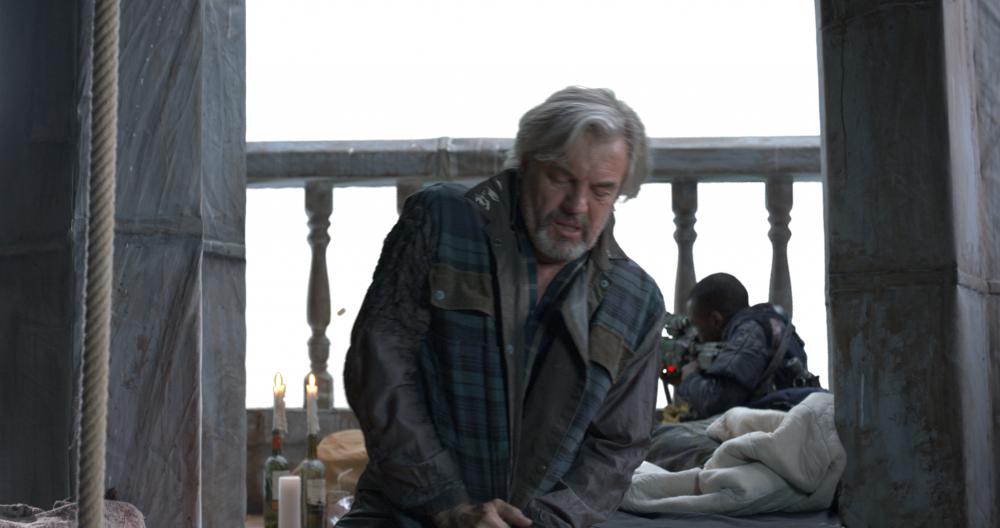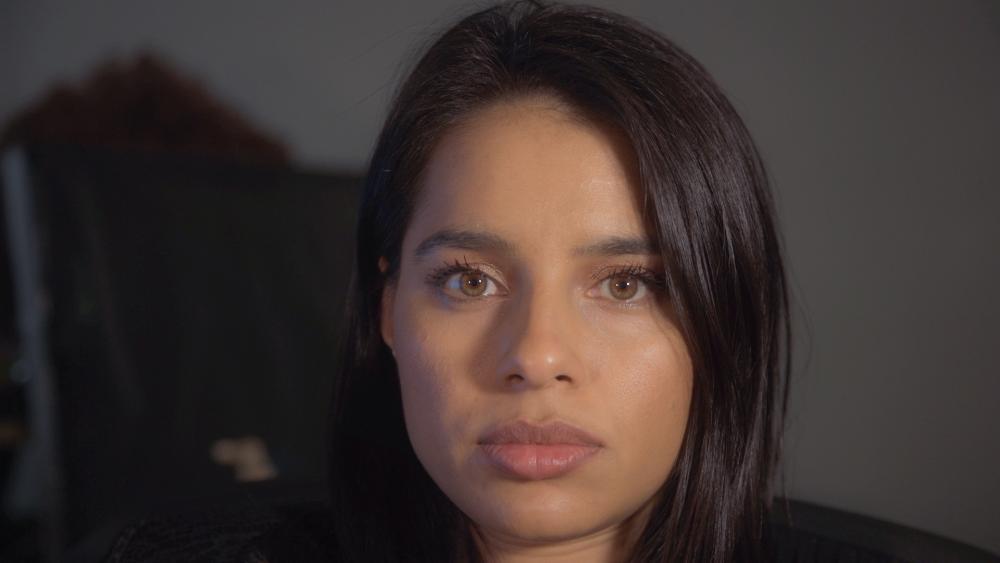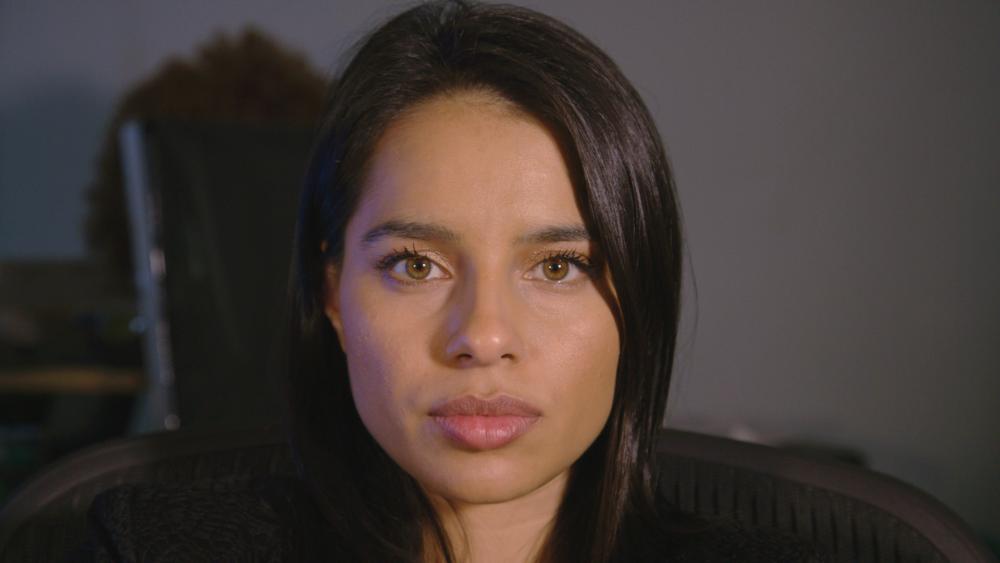-
Posts
1,839 -
Joined
-
Last visited
Content Type
Profiles
Forums
Articles
Everything posted by jcs
-
Great to see Adobe reaching out to a blogger and making sure the issue was fixed! With Resolve (free) catching up to Premiere for basic editing (and much better grading tools), with everything (possible) GPU accelerated, and Fusion now free, perhaps After Effects can be merged into Premiere as one elegant, fast GPU accelerated app. Hitfilm for $300 already does this: http://hitfilm.com/ (combines editing and compositing/VFX into one app). Hitfilm isn't as fast as Premiere for editing, however it's much faster than After Effects for VFX.
-
The Premiere issue with quality was reported in August of last year. There's been at least one update since then- is the issue still present? For the ultimate h.264 quality ffmpeg with x264 (command line or one of the UI versions) is worth a look. It appears Adobe licenses their encoders and perhaps Apple uses their own. That could explain delays in fixing issues. Resolve is getting better as an editor however it doesn't have the same level of codec support as Premiere and FCPX. For example, A7S XAVC-S has no audio support in Resolve 11 (latest).
-
Steve- thanks, yes A7S.
-
Here's a solution that might work for you: $99 Commlite for A7x (full frame): http://www.amazon.com/COMMLITE-Focus-EOS-NEX-EF-EMOUNT-Version/dp/B00MOB2FL0/ . This will allow you to use the Canon lenses for your cinema style shooting. Autofocus won't likely be fast enough for stills. I have the MB EF to NEX IV, however forums have reviewed the $99 Commlite perhaps better than the MB. $898 Sony SEL18200 lens: http://www.amazon.com/Sony-SEL18200-E-mount-18-200mm-F3-5-6-3/dp/B0042GFYLI/ . When used with AutoISO, you can zoom while shooting documentary style. At F3.5-6.3 it's not a fast lens with shallow DOF, however it works great for run & gun, autofocus for video is decent, it's sharp, etc. It's an APS-C lens which is helpful for run & gun: reduced rolling shutter. Here's what it looks like in low light, with the camera on auto-everything, stock PP6, 60p (slowed to 24p in most shots): https://www.youtube.com/watch?v=aq8m2FaVL1U , many different light colors (auto WB), handheld. If you need slow, cinematic power zoom (doesn't do fast power zooms), the SELP18200 is worth a look. If not needing power zoom, I prefer the non-power version as the focus ring is wider. You can use the SEL18200 for stills with autofocus- the range is great. However Canon bodies (e.g 5D3) with Canon lenses are a much better stills combo, especially if shooting people/skin.
-
http://www.artslaw.com.au/info-sheets/info-sheet/using-brands-and-products-in-film/
-
The FS7 supports 4K ALL-I at 240Mbps and 4K IPB at 100Mbps. Looks like Oliver was shooting ALL-I (XAVC-I).
-
The hardware should easily be able to do 4K at 100Mbit/s to the SD card, which is what the GH4 does. H.264 would be good enough and more usable than H.265 at this point. If they did offer H.265, H.264 at a higher bitrate should also be an option. If the A7x platform does get 4K, could be another indicator that the 5D Mark IV has 4K (most likely 8-bit 420).
-
Yeah, the performance on the right is pretty shady!
-
Thanks sunyata. Andrew- using ffmpeg with 'copy' for both codecs will run as fast as copying the files- zero transcoding. Renaming <1DC file>.mov to <1DC file>.mp4 might also work (I used this trick before- might work here too).
-
This may be the same problem: https://vitrolite.wordpress.com/2010/12/31/quicktime_gamma_bug/ . A faster solution (faster than real-time, can put into a script and fully automated) might be to rewrap out of the .mov container to .mp4/.avi to avoid the QuickTime decoder in PPro. Something like this: ffmpeg -i <1DC file>.mov -vcodec copy -acodec copy <1DC file>.mp4 This will run very fast and can easily be scripted to process a whole directory. Much faster and easier than Resolve or any other method (if it works). Can you upload a couple seconds of raw 1DC footage with banding?
-
It's likely Premiere's QuickTime importer (.mov container). Are you using Windows or OSX? Have you tried rewrapping the MJPEG from .mov to .mpg/.mp4/.avi? To get around a PPro bug a while back I renamed the .mov files to .mpg (or perhaps it was .mp4) to get PPro to use the native importer vs. QuickTime (QT and MP containers are very similar which allowed the trick to work). You could use ffmpeg to quickly rewrap MJPEG in .mov into a .mpg/.mp4/.avi container.
-
Found some 4K Open EXR 32-bit-per-channel F65 frames: http://media.xiph.org/mango/tearsofsteel-cleaned-exr/ From: https://mango.blender.org/production/xiph-org-f65-raw-linear-exr-cleaned-and-finals/ Random frame- original: Post ACR w/NR + high saturation: Over-saturated the skin tones still look pretty good (didn't go green or magenta).
-
Perhaps now that the price has dropped it's getting used more. On sticks it wouldn't seem like much more production work than shooting ARRIRAW. Looking forward to a shootout between the ARRI 65, Sony F65, and Red Dragon to see how their latest color science compares (current top of the line 'true 4K' cinema cameras (more than 4K Bayer is needed to accurately capture 4K RGB)).
-
Hey Jax- understand your points re:TV vs. film and time+budget. Lucy and Oblivion have a look unlike the Alexa (currently best camera for skin tones and overall great images with low effort). After Earth (F65+C500) also looked pretty nice, color-wise. Alexa looks great most of the time. Red (Epic, Dragon) can be hit or miss. F55 so far has looked bland or just off WRT color (e.g. early Marco Polo). Perhaps that later DPs dialed in the F55 better (later episodes looked better). When color is challenging, one technique is to use lower saturation (IMO: bland, emotionless). When color is spot on, you can really push the saturation, and depending on the desired effect/emotion for the story, can be very cool. The use of color in The Matrix was spectacular: highly saturated (stylized/not real) with emotion/feeling matching the story. The old Technicolor process has a unique look that is very cool. The color in "Robinson Crusoe on Mars" was amazing. While I've noticed Red Dragon footage getting better and better, Gone Girl's color didn't do much for me (bland). When I see a movie that has amazing use of color, there's an emotional reaction that increases the excitement and entertainment level of the film. All the films I've seen shot on the F65 IMO have amazing color (Oblivion, Lucy, After Earth). What F65 films have you seen that didn't do it for you (color wise)? One of the reasons I gave the A7S another chance in figuring out its color (with many hours testing against 5D3 RAW) was due to seeing that the F65 can look great and seeing a tiny bit of that in the A7S. If Canon releases another crippled 5D the A7S is a decent alternative when color is done well.
-
I believe the A7S and 5D3 RAW will be able to match pretty well (still working on it): Camera A: Camera B:
-
Re: price drop and Canon comment: “put it in-line with the Sony FS700″. Did they mean FS7? The FS700 is $6k and FS7 $8K on bhphoto. The FS700 doesn't do 4K internally. The FS7 is a closer match to the 1DC with 4K internal recording with a kick-ass codec: 422 10-bit XAVC. With apparently much improved skin tones which so far appear to compete well with the C300 examples online, the FS7 is a lot more bang for the buck compared to the 1DC where features overlap. The FS7 also does 1080p slomo up to 180fps, has built in NDs, XLR audio, focus peaking, zebras, and a decent swivel screen. With a SpeedBooster it can do a 1.1 crop in 4K vs the 1DC's 1.3x 4K crop. XAVC 4K files are smaller (240Mbps ALL-I and 100Mbps IPB) than the 1DC MJPEG (501Mbps) and don't require transcoding to edit. It sounds like the FS7 needs a firmware update (slow UI, requires reboots for some mode changes, etc.), whereas Canon has a much simpler UI (easier to use, reliable). The smaller DSLR form factor of the 1DC has its advantages, however for a pro-level internally recording 4K camera (with 180fps slomo), the FS7 looks to be very competitive against the 1DC (as in it may be a much better value for video-only applications).
-
Rich- one thing that can be used is AUTO DRO when in PP OFF + Neutral (where DRO is Dynamic Range Optimizer). In a quick test it brings up the shadows a bit in the background when the foreground is well-lit. This could be handy in some dynamic lighting situations (as long as nothing surprising happens). Will compare to custom PPs. Using an F&V R300 light (5600K decent color quality balanced LED), I still get more of a magenta bias vs. green for my skin tones (PP OFF). Will test with a darker skinned model shortly. Gensnap- stock PP6 and PP OFF + Neutral are good places to start. It's very important with the A7S to set WB as accurately as possible as well as the White Balance Adjustment (to fix typical green or magenta issues). Compared to the 5D Mark III (H.264), the 5D3 doesn't have much range in adjustments, and looks pretty good in most settings. The A7S has a huge amount of adjustments, and it's easy to get into no-man's land. That said, stock PP6 and PP-OFF + Neutral (-3,0,-3) are closer to 5D3 general ease-of-use. The cinegammas and Slog2 are more advanced and provide additional useful options.
-
Have been testing under ~3000K continuous spectrum incandescent light (primary, along with (and without) blue-heavy ~5000+K monitor light). Will double check results including high CRI LED and CFL (not continuous spectrum). Will also check scopes in Resolve. The general pattern in my test case is the PP's have a green bias and PP OFF + Neutral has a magenta bias. Will post pics when I'm done testing. Slog2 has a base ISO of 3200- the Cinegammas are down in the 100's (e.g. 200). I use a 77mm gen 1 LCW Fader ND outdoors regardless of base ISO or PP. The 'cross pattern' at higher ND settings is indeed not pretty but so far has worked well enough if backed off a bit from max. The newer variable NDs are nicer (and work much better at longer focal lengths). The polarizers from variable NDs change the look as well (especially the sky when perpendicular to the sun- sometimes a good thing). I picked up standard NDs but have found the variable ND to be very handy for run & gun shooting- just a quick ring turn to adjust ND level (vs. screwing on/off or using magnetic mounts and having to swap/add/remove NDs).
-
The shortcut method to pick a camera would be to start at bhphoto, and see what they have in stock for your price range. Then read the reviews on bhphoto, and if present, on Amazon. Anything from Canon, Panasonic, or Sony will be great (I haven't used other brands- there may be more). It's a matter of features and skin tone for the price. The full auto on the A7S with the SEL18200 is very much like a traditional camcorder, except zoom is manual. In many cases, auto focus works very well, however sometimes it focuses on the wrong object or shimmers (fast hunting). All of my camcorders from Sony, Panasonic, and Canon have auto focused much better. That said, for the example event in this thread, it worked perfectly well. Sony's auto ISO works smoothly which is important for the 18200 as it goes through the variable aperture zoom range. I have the SEL18200 that came with the FS700 and the SELP18200 (power zoom). While I may use the SELP version for a slow power zoom shot, I haven't used it much. The SEL18200 has wider zoom/focus rings so it's easier to use. The IQ in terms of sharpness is higher than the Canon 24-105F4L on the MB adapter. Yeah, the 18200 is a good all around lens.
-
Regarding camcorder reviews, I would go to bhphoto and Amazon and read the reviews from actual users. Beyond that, I hear this website has the best camcorder reviews: https://www.google.com/search?q=camcorder+reviews . I used the A7S+SEL18200 for this shoot with PP6 and auto-everything: https://www.youtube.com/watch?v=aq8m2FaVL1U . Challenging low light, lots of colored lights, many different skin tones, etc. Audio was in-camera mic. Worked better than the FS700. The A7S has decent preamps, so a Rode VMP or NTG2 with battery power would work OK (I have the NTG2). The Sennheiser EW100 G3 wireless kit works great too, either with lavs or the wireless mic transmitter (works great with NTG2 with battery).
-
Hey Rich, -3,0,-3 is how I had set up Neutral with PP off (unless it's the default?). It appears to be a Rec709 gamma and color mode. In my test environment, I need to set White Balance Adjustment to A4, G3 to get skin tones looking similar to my custom PP for skin tones. Using PP OFF + Neutral -3,0,-3 with the appropriate WB and WBA looks pretty good, however it's possible to get nicer highlight behavior and skin tones with a custom PP. It looks like PP OFF + Neutral blows to white sooner than the cine gammas and of course Slog2 using a Rec709(?) gamma similar to the graph below. This isn't for the A7S (any online?), however the curves are similar (HG's similar to cine gammas): Slog2 is usable with custom tweaks (#1 being don't use SGamut for color mode).
-
Andrew- you could test the IPB vs ALL-I hypothesis with an A/B test of the same scene (perhaps shot with two cameras would be the easiest). Intuitively I don't think this would be the case since even ALL-I/RAW frames we view on the internet are now 100% IPB.
-
A way to test motion cadence would be to shoot locked down cameras pointed at something with periodic motion which could then be measured in post and compared. The RED article above makes sense re-temporal aliasing. Perhaps different cameras integrate sensor light differently enough to have a visibly different temporal effect on motion blur.
-
Shallow DOF and ENG haven't really gone together as accurate focus is much more challenging on large sensor cameras (either autofocus or manual focus). In live shots on the viewfinder of the FS700 and A7S, shots can look in focus (viewfinder + peaking), however in post they're not quite in focus. When autofocus works, it works really well (both cameras). So far autofocus hasn't worked nearly as well as with small sensor cameras. For ENG work for now it's best to stick with an ENG camera (so no FS700/FS100). I have found that I can make A7S and even 5D3 footage look like video straight from the camera. Trying to get a film look in camera tends to run into issues with various scene colors and lighting conditions. I have also found it's best to get accurate color from the camera, even if it looks like video (though it's important to prevent highlight clipping when possible). The best way to get the film look is in post. You can find or create a LUT that has the film look you want, which you can apply to all of your properly colored/exposed 'video look' footage which will then look filmic with one simple step in post. If you want the least work, Canon provides the best skin tones out of camera, though Sony is catching up (see FS7 compared to C300 footage online). Panasonic can also have a nice straight-from-camera look (for example GH4 with Natural profile). If you liked the look of the DVX100, check out their current cameras too.
-
I've searched for official docs and specs for correctly processing the A7S's custom Slog2+SGamut implementation (not the same as the Sony Pro versions). While the Pro LUTs get close, colors aren't quite right, especially skin tones. Slog2+SGamut with the LUTs found so far can provide very cool looks. If one is looking for something accurate for skin tones, I haven't found LUTs which can do this. It's puzzling that Sony hasn't released tech specs for the A7S's custom Slog2+SGamut or official LUTs (as they do with the Pro cameras). I found the best all-around stock PP is PP6. Example here (stock PP6, auto ISO, auto WB, auto AF- event style shoot with many different skin tones and multiple colored lights): https://www.youtube.com/watch?v=aq8m2FaVL1U . You can bump saturation a little in-camera and along with carefully set WB, get good out-of-camera footage. Indoors, PP4 isn't too shabby after dialing down saturation. I'm putting together a tutorial for matching A7S to 5D3 RAW with an emphasis on accurate skin tones. Currently testing the results on models/actors- so far so good. Will publish the results when done.






